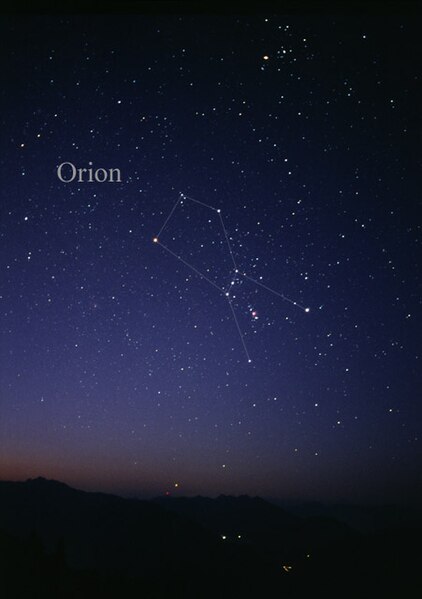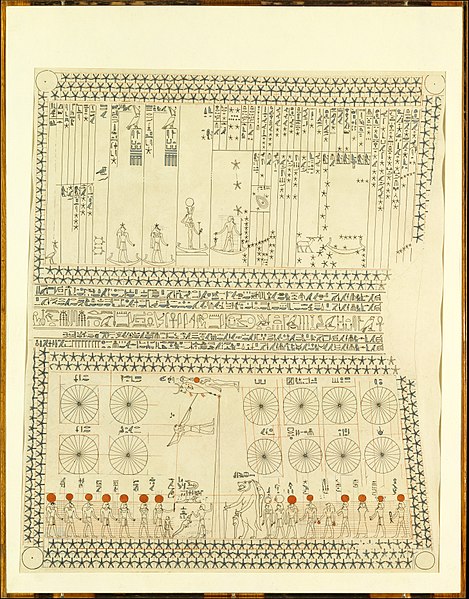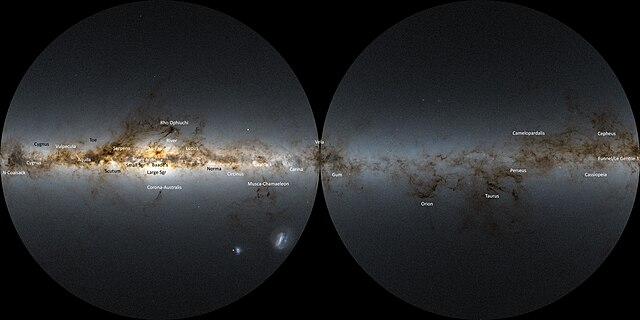Orion is a constellation which is visible from most parts of the world. As well as being one of the 88 modern constellations, it was one of the 48 constellations listed by the 2nd-century astronomer Ptolemy. It is named for a hunter in Greek mythology.
Click on to see large image.
The constellation of Orion, as it can be seen by the naked eye. Lines have been drawn.
Orion as depicted in Urania's Mirror, a set of star chart cards published in London c. 1825
This view brings out many fainter features, such as Barnard's Loop.
A constellation is an area on the celestial sphere in which a group of visible stars forms a perceived pattern or outline, typically representing an animal, mythological subject, or inanimate object.
Babylonian tablet recording Halley's Comet in 164 BC
Egyptian star chart and decanal clock, from the ceiling of Senenmut's tomb, c. 1473 BC
The Milky Way as seen by Gaia, with prominent dark features labeled in white, as well as prominent star clouds labeled in black.
Inca dark cloud constellations in the Mayu (Celestial River), also known as the Milky Way. The Southern Cross is above Yutu, while the eyes of the Llama are Alpha Centauri and Beta Centauri.








